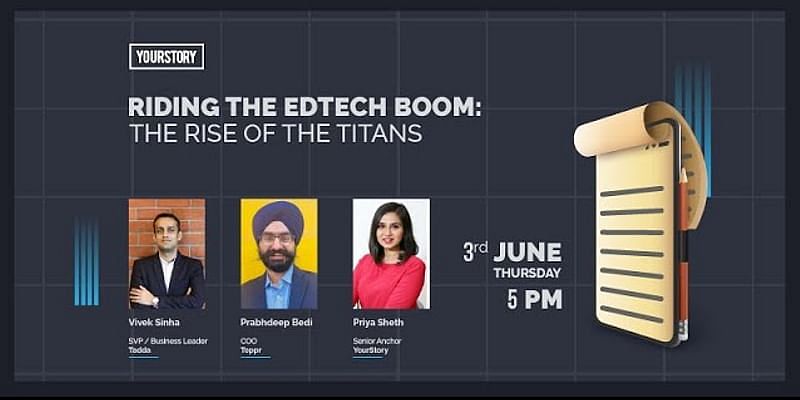The growth story of India’s edtech sector can be divided into pre- and post-coronavirus pandemic. Due to increased digitisation and the increased reliance on the online medium for learning post the nationwide lockdown last year, the industry has grown at a rapid pace.
The funding for edtech has grown to $2 billion according to YourStory’s 2020 annual funding report, which is expected to expand exponentially over the next decade. Currently, there are approximately 3,500 edtech startups in India, according to KPMG, and this number is bound to increase in the near future.
In a recent panel discussion at YourStory’s Daily Dispatch episode, Toppr COO Prabhdeep Bedi and Vivek Sinha, Senior Vice President and Leader of Test Preparation Business, Unacademy shared valuable insights on the growth of edtech companies during the pandemic.
“By 2025, edtech will command a high double-digit market share. It will not replace schools altogether but in some categories, e-learning might become the dominant player,” says Vivek.
The rise of edtech startups
Both and have seen overwhelming growth during the pandemic.
Toppr, which focuses on online learning from Class V to XII, saw a rise in the number of monthly active subscribers from eight million in February 2020 to 35 million in Feb 2021, along with a steady increase in the time spent by subscribers on the platform.
At the same time, Unacademy, which primarily focuses on test preparation and K-12 studies, has also seen a rapid and healthy growth.
The pandemic shift
Owing to the lockdown, there has been a drastic shift from a brick-and-mortar system of learning to e-learning. This shift, according to Prabhdeep, is essentially happening because schools, colleges, and coaching centres are transitioning to e-learning, owning to the current circumstances.
According to Vivek, this shift is category-specific. For categories such as certification courses, the learning will entirely shift to the online mode while schools might return to a brick-and-mortar set-up once the situation gets better.
In rural areas, edtech plays an important and relevant role as children often do not have access to quality education in an offline setting. The edtech startups have helped to make quality education affordable and accessible, with three-fourths of Unacademy’s users and approximately 60 percent of Toppr’s users hailing from Tier-II or III cities. However, the sector still faces vernacular and infrastructural difficulties, however, many startups have now started to solve those issues.
Digital future of education
The future of education is going to be hybrid. This is why public and private spaces need to come together for the hybrid model to work smoothly in the future. Adding on to that, Vivek says that edtech businesses are far from reaching the stage of saturation as the market is quite big. The growth is not supply linked in the case of edtech. He also adds that e-learning is a high gross margin business and therefore, it will continue to grow.
He also explains how Unacademy aims to innovate on the product side and replicate the offline experience, online. The platform also aims to make the products more content-rich.
Prabhdeep also shares similar plans for improving the content on their platform, expanding to junior grade, and innovating on the vernacular spectrum to successfully enable hybrid learning in the future.
“We’ll have to make sure that hybrid learning and tools for hybrid learning are there for schools, coaching classes etc. SaaS (Software as a Service) is coming in education and it has come up in a big way, and we need to develop tools that supports educators as well to continue to operate in this hybrid setting,” says Prabhdeep.










![Read more about the article [Funding alert] Autonomous procurement startup Aerchain raises $3M in pre-Series A from IndiaMart and Season2 VC](https://blog.digitalsevaa.com/wp-content/uploads/2021/08/feature15627598600911574830759090png2-1628833988915-300x150.png)